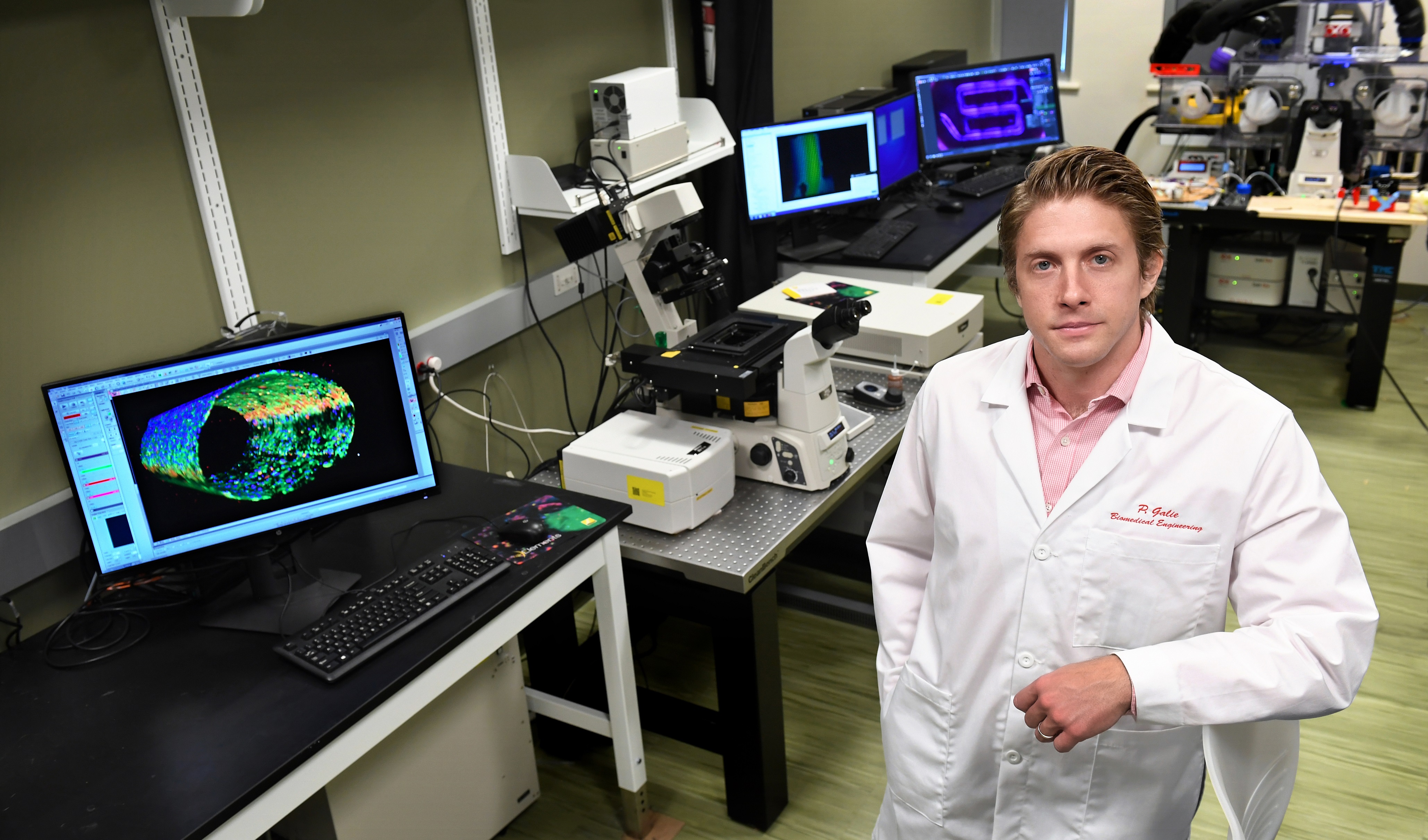Rowan researcher: Novel coronavirus could lead to ‘leaky’ blood-brain barrier
Rowan researcher: Novel coronavirus could lead to ‘leaky’ blood-brain barrier

A Rowan University researcher has won a $299,876 research grant from the National Science Foundation for a project exploring why the novel coronavirus contributes to an increased risk of stroke among infected patients.
Dr. Peter Galie, a biomedical engineer and assistant professor in the Henry M. Rowan College of Engineering, is focusing on the spike protein along the surface of the SARS-CoV-2 virus that causes COVID-19.
Using a lab-made model of the blood-brain barrier, Galie is examining how the spike protein affects the junctions between the tightly packed cells protecting the brain from toxins, pathogens, inflammation and disease.
“Anytime those junctions start to fall apart, there can be lots of bad consequences,” Galie explained. “There’s a reason why our bodies have very tight junctions between the cells in our brain. It’s really harmful for any of the components in the blood to cross out from the blood vessels and into the brain tissue.”
With new federal funding, Galie is working to understand how the spike protein can lead to breakdowns in the brain’s protective barrier. He hopes an understanding of the process at a molecular level can point other researchers toward medicines that can stop the breakdown.
“This work isn’t going to cure coronavirus,” Galie cautioned. “This is really focusing on mitigating all of these neurological effects these people are experiencing,” Galie said. “This is a small piece in a very large puzzle of trying to help all these patients that are suffering right now.”
Such research on the novel coronavirus could lead to a greater understanding of how other viruses like influenza can harm the cells of the blood-brain barrier and lead to neurological problems like confusion, loss of smell, seizures and stroke, noted Dr. Robert Nagele, professor in the Department of Geriatrics and Gerontology and N.J. Institute for Successful Aging at Rowan University School of Osteopathic Medicine.
Is the virus irritating the cells, causing them to spasm and pull away from each other? Is it entering the cell and passing through to the other side? Or is it killing cells, leading to holes in the barrier?
“Which of those mechanisms is working here, we don’t really know for sure, but Pete’s research will be able to tell us,” said Nagele, who received a patent for discovering diagnostic biomarkers for the early detection of Alzheimer’s disease. “That’s a really important finding because it’s very likely that other viruses use the same tactic to get into the brain.”
The grant supports Galie’s lab and the salaries of three graduate researchers. Undergraduates will share in the work through their junior and senior engineering clinics.
Already, Galie has collaborated with researchers at Temple University on a preliminary paper now under peer-review. Even so, he said, he expects the entire project will take about three years to complete.
“Everybody wants to make a difference as soon as possible,” Galie said. “But at the same time, science just doesn’t move that fast, even if you want it to move that fast … We hope to accomplish a lot in three years.”